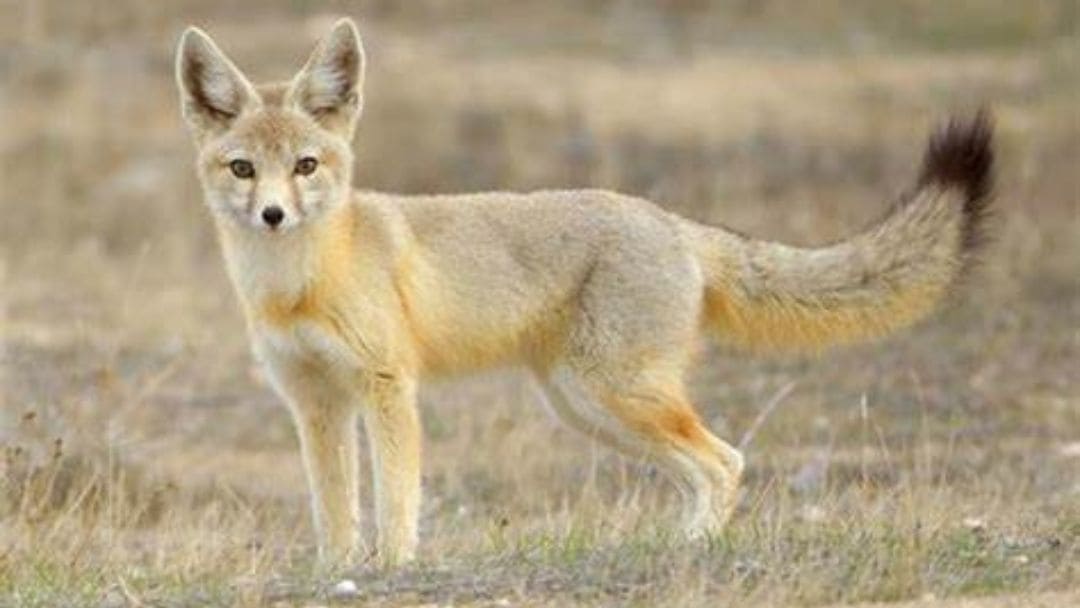Despite their small stature, Kit Foxes thrive in the harsh desert with remarkable adaptations, complex social structures, and a talent for burrowing.
Imagine vast, arid landscapes bathed in relentless sunshine. Here, amidst the scorching sands and prickly cacti, thrives a resilient and resourceful inhabitant: the Kit Fox (Vulpes macrotis). Don’t be fooled by their diminutive size – these foxes are masters of survival in the unforgiving desert environment.
Let’s delve into the world of the Kit Fox, exploring their clever adaptations, fascinating burrowing behavior, and strong family bonds.
Small Yet Mighty: Masters of the Desert
Kit foxes hold the title of one of the smallest fox species in North America. Their slender bodies and surprisingly large ears are key adaptations for desert life:
- Small Size, Big Advantage: Their compact build allows them to conserve energy and navigate through narrow spaces within the desert landscape.
- Big Ears for Cooling Down: Their large ears, unlike most foxes, aren’t just for hearing. They help dissipate heat, a crucial adaptation for regulating body temperature in the scorching desert sun.
These seemingly small features play a vital role in the Kit Fox’s survival. Despite their size, Kit foxes are known for their:
- Keen Senses: Sharp eyesight and excellent hearing allow them to detect prey and potential threats with remarkable accuracy.
- Exceptional Agility: Their nimble bodies and quick reflexes make them skilled hunters, capable of outmaneuvering their prey in the desert terrain.
Desert Survival Strategies: Life in the desert presents a constant challenge, and Kit foxes have developed a number of strategies to thrive:
- Crepuscular Activity: The desert heat reaches scorching temperatures during the day. To avoid the worst of it, Kit foxes are primarily crepuscular, meaning they are most active at dawn and dusk when temperatures are cooler.
- Adaptable Eaters: These resourceful foxes are not picky eaters! Their diet consists of a variety of food sources readily available in the desert, including small mammals, insects, and even some desert plants.
Digging Deep: The Kit Fox’s Burrow Network
One of the most fascinating aspects of Kit Fox behavior is their burrowing activity. They are skilled excavators, capable of digging complex underground dens that serve multiple purposes:
- Desert Hideouts: These dens offer crucial shelter from the harsh desert sun, providing a cool and shaded refuge during the hottest parts of the day.
- Protection from Predators: The burrows act as safe havens, protecting Kit foxes from larger predators that might roam the desert landscape.
- Raising the Next Generation: These dens are particularly important for raising young Kit foxes, providing a secure environment for them to grow and develop.
Family Matters: Strong Bonds and Social Interactions
Kit foxes are known for their strong family bonds. Mated pairs typically work together, with both parents taking an active role in raising their kits. The burrows not only provide shelter but also serve as social hubs within Kit fox communities.
As we continue our exploration of the captivating world of foxes, the Kit Fox serves as a reminder that size isn’t everything.
Through remarkable adaptations, clever strategies, and strong family bonds, these small desert dwellers thrive in one of the harshest environments on Earth.
Kit Fox FAQs: Unveiling the Secrets of the Desert’s Mighty Survivor
How big are Kit Foxes?
Kit foxes are one of the smallest fox species in North America, known for their slender bodies and large ears. Their small size makes them well-adapted to conserving energy and navigating the desert landscape.
What special adaptations do Kit Foxes have for the desert?
Kit foxes have several adaptations for surviving in the desert:
- Large Ears: These help dissipate heat, regulating their body temperature in the scorching sun.
- Small Size: This allows them to conserve energy and move through narrow spaces within the desert.
- Crepuscular Activity: They are most active at dawn and dusk when temperatures are cooler.
What do Kit Foxes eat?
Kit foxes are opportunistic eaters with a varied diet that includes small mammals, insects, and even some desert plants, showcasing their adaptability to the available food sources in their arid environment.
Where do Kit Foxes live?
Kit foxes are found in the vast arid landscapes of North America, particularly in areas with loose soil suitable for burrowing.
How do Kit Foxes raise their young?
Kit foxes are known for their strong family bonds. Mated pairs work together to raise their young (kits) in complex underground dens that provide shelter, protection from predators, and a safe space for the kits to grow and develop. These dens also serve as social hubs within Kit fox communities.


